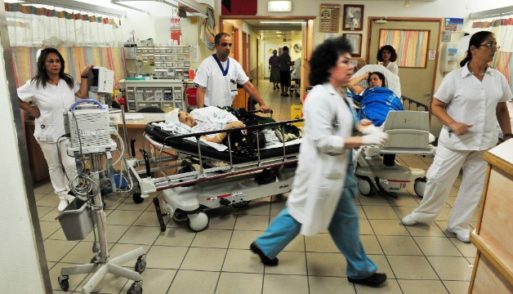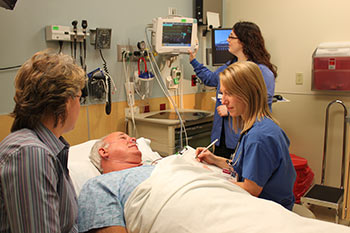Over the first decade of the 21st century, the number of Americans over the age of 65 increased at a faster rate than at any other time in U.S. history, reaching over 40 million as of 2010. At the same time, the number of people over the age of 85 grew at a rate nearly three times that of the general population — a trend that has been driving innovations in medical care delivery for seniors across the United States. One of these is a growing shift towards specialized emergency departments for the elderly known as geriatric emergency rooms.

In busy ERs, the elderly are often overlooked
(Credit: CNN.com)
Geriatric emergency rooms are a relatively new phenomenon, a response to the aging population and their complex medical and psychosocial needs. According to the Geriatric Emergency Department Guidelines, emergency room staff are in a unique position to “meaningfully impact not only a patient’s condition,” but also guide decisions about whether to “utilize relatively expensive inpatient modalities or less expensive outpatient treatments.” When ERs are staffed by medical professionals trained in the care of geriatric patients, these decisions tend to be informed by a thorough understanding of the complex needs of the elderly population as a whole.
For example, elderly patients tend to fare poorly when hospitalized, even when their underlying conditions are treated and “cured.” According to a study published in JAMA in 2011, one-third of patients over the age of 70 who are admitted to the hospital develop “hospitalization-associated disability.” In other words, they leave the hospital in far worse shape than when they arrived. Many who were formerly independent are discharged needing assistance with most activities of daily living, such as walking, cooking, and even feeding themselves. Some recover most of their former functional capacity, but many do not.

Credit: adventishealth.org
In the geriatric emergency room, however, patients are triaged to determine if hospitalization is appropriate or if their needs can be met through well-planned interventions in the home. According to Dr. Denise Nassisi, who heads the geriatric emergency room at Mt. Sinai Hospital in New York, her specialized team of healthcare providers try to diagnose and treat patients in the emergency room whenever possible instead of admitting them to the hospital automatically. “We are trying to change the culture of just admitting,” she said in an interview with CNN.
Geriatric emergency rooms are also places where the medical needs of the elderly can be promptly and appropriately addressed. Chaos reigns in most typical hospital emergency rooms, and frail elderly patients often languish for hours before receiving care. Geriatric ERs, on the other hand, are quieter and less chaotic, and the staff are trained to quickly assess patients who may be unable to articulate their needs due to sensory or cognitive deficits such as hearing loss, difficulty with vision, memory loss or dementia. This means patients are treated more efficiently and more effectively, which leads to better outcomes overall.

 Geriatric Emergency Departments Focus Exclusively on Seniors
Geriatric Emergency Departments Focus Exclusively on Seniors




 The Spiritual Symbolism of Cardinals
The Spiritual Symbolism of Cardinals














